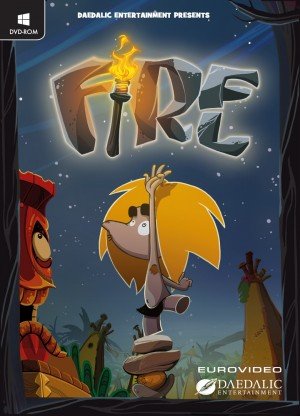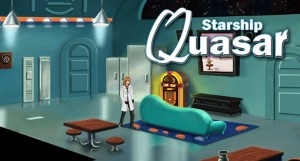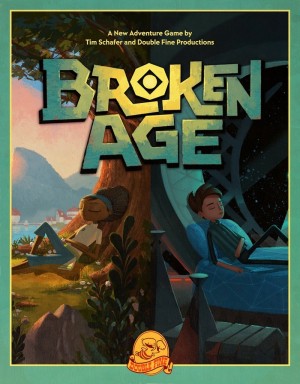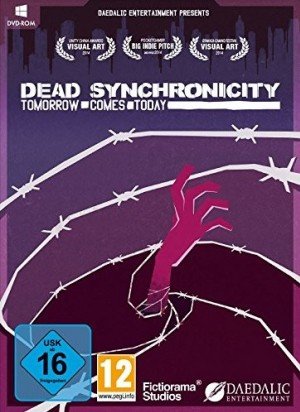Review for Her Story

Full motion video has always polarized the gaming community, as has the ongoing debate of whether an interactive story can be a “true” adventure. If you don't like either, you can stop reading here, because Her Story is a quintessential example of both. However, if you like a game with more story than puzzles and enjoy watching a real person instead of a computer-generated one, this game definitely merits your attention. Essentially a searchable police database filled with video clips of one woman’s testimonies, it plays more like a text adventure than a traditional graphic adventure, and can be incredibly rewarding when you figure out an important piece of the story with just one little word. The experience might have benefitted from a little more variety and multiple perspectives instead of just a single interviewee, but the limited focus keeps the narrative tight and what the game offers is very unusual and highly enjoyable in its own right.
Her Story is the newest game from Sam Barlow, writer and designer of the acclaimed Silent Hill: Shattered Memories, although this is a much different game than its horror-themed predecessor. Players are in direct control of a police video database as they try to uncover the mystery of a 1994 missing person’s case. A man disappeared at that time and his wife was questioned by the police several times over the course of several months, covering a number of different angles. Was he killed? Did she murder him? Did someone else? Is she withholding the truth from the police? Does she have evidence that will crack the case? You'll have to play to find out.
If I’m offering only questions rather than answers, that’s because discovering the details for yourself is part of the fun (or really, all of the fun), including the woman’s name. The lovely British actress Viva Seifert does a convincing job of portraying her, right down to the small details in body language, such as tapping her fingers against the table and crossing her arms. My only reservation is that I would have liked to have seen a little more emotion, since her lack of tears was almost startling. She is the only character ever seen, but many others are mentioned during the interviews, including her husband, both of their parents, coworkers and friends. Some are mentioned enough to be considered prominent characters, while others are referenced only once. Since they are only introduced second-hand, they remain largely two-dimensional, and ideally we’d have seen some of them questioned as well to broaden the mystery. Even the detectives asking her questions are unseen; in fact, they aren’t even heard.
The mystery itself is pretty standard fare, and since we are only hearing one side of a story, there are parts that can be interpreted in different ways. The beauty of the storytelling is in how it’s told, in that players control which bit of the story gets revealed and when. The interviews have been cut up into smaller clips, ranging from ten seconds to four minutes. Each video has been tagged by police with specific words she uses, but players can also add tags of their own to make finding previously seen clips easier. The task is to come up with the appropriate keywords for the database, like “robbery” or someone's name, and a list of clips appears in which she says that particular word or phrase, which you are then free to watch. The narrative is slowly revealed through the resulting clips, and which words you search for shapes what part of the story you discover.
While there are no traditional “puzzles” in this game, formulating the larger picture serves as one giant puzzle whose pieces you need to find yourself. You might search for a keyword that brings up an important point in one of the later interviews, but you might not have the context to understand how relevant it is yet. Common words bring up a ton of clips, but thankfully the game counters this by only allowing the first five clips to be seen. I entered words I heard the woman say in passing, not thinking them particularly important, and was surprised to find them tagged and used in as many as five entries. In a game where typing is important, I was curious if it would pick up on cultural differences, for example the word color/colour, and I was happy to see they both led to the same clips. However, “mum” will lead to clips while “mom” will not.
When you first boot up the police computer (meaning, the game, as that’s all there is to it), you may feel a little lost. It looks like an open program atop a regular desktop, complete with a trash can icon that you can look in, a small tic-tac-toe kind of game, and even readme.txt files. Reading these files helps you understand what you're supposed to do, and the computer starts with the word “murder” written for you to start your search. The interface is all done to look like an old PC monitor, complete with glare that can be turned on or off, as well as an option for subtitles. New video clips that have not yet been seen are indicated with a yellow eye icon. The clips include a timestamp, which comes in handy for making a timeline. Once a video segment is clicked on, it becomes full screen, with the option to fast forward or rewind, like on an old VCR tape. If you feel you’ve found something important, you can save clips to the “user session” area, where you can quickly access them again at will, and all search words you’ve entered are saved in a log.
Although the interviews are broken up into many smaller videos, the details help distinguish between the different days. The woman’s clothes change, from the color to the length of sleeves and collar. Her hair also changes, from up in a messy bun to down. The variety is helpful for immediately differentiating between the interview sessions. The innocuous background stays consistent, with white walls and what looks like a bookshelf behind the interviewee’s chair. There are also a few props that she handles, including a guitar, an evidence bag, a Styrofoam cup, and a clear glass of water, depending on the day.
The sound quality in Her Story is solid. Seifert’s delivery is very clear, with good enunciation in her distinctly English accent. The ambient sounds are well done and blend with the music perfectly, with the telltale sound of old-fashioned light bulbs flickering in the background. The music is haunting, with a sad piano tune that can sometimes feel menacing and sometimes bittersweet. The score changes subtly enough that it doesn’t feel repetitive.
Once you have seen most of the clips, a chat message on the police computer comes up asking if you are done. If you say yes, the game ends. You don’t get to input anything, like what you think happened. This isn’t a “game” after all, it’s a database. If you say no, you can still watch more clips, and the chat bubble will stay where it is so you can choose yes at any time afterwards. For completionists, there are Steam achievements that show when you have viewed 50%, 75%, and 100% of the clips. No matter how long you wait, however, there is no real ending as gamers have come to expect.
It’s easy to quit and resume later if necessary, as Her Story autosaves upon exiting, but you may not need to as the game can be quite short. It shouldn’t take much more than two hours before you’re given the chance to declare yourself done, with extra time added if you want to keep playing until you have seen all of the clips. Even at that length, however, I had a whole page, front and back, of words scribbled down that I wanted to try, and timelines of when things happened. It felt so rewarding to find a new keyword that opened up so many more pieces of the story. With just one person interviewed, it’s a very limited experience that could have been much more ambitious, but for a small indie production its scope is certainly understandable, and there's something to be said for focusing the narrative to a single perspective. I liked the inventive way of doling out the story bit by bit, and would recommend Her Story to anyone who enjoys games that push the storytelling medium to new levels.



























